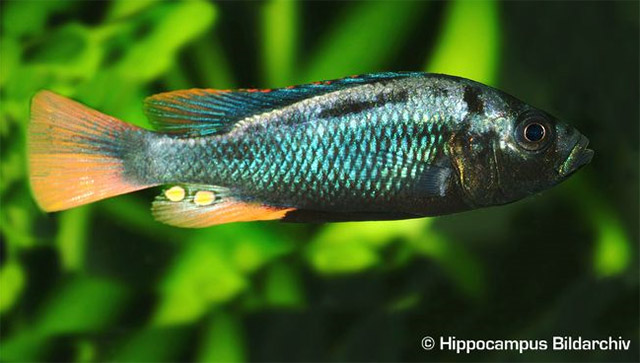| Cichlidae (Cichlids), subfamily: Pseudocrenilabrinae |
| 9.3 cm SL (male/unsexed) |
|
benthopelagic; freshwater; pH range: 10 - 15; dH range: 8 |
| Africa: Lake Victoria system in Uganda (Ref. 52072), Kenya (Ref. 52331) and Tanzania (Ref. 4967). |
|
Dorsal spines (total): 15-15; Dorsal soft rays (total): 9-9; Anal spines: 3-3; Anal soft rays: 8-9. Longitudinal scale count 30-31; snout length 33.4-34.6% HL; maxilla reaching below pupil; mouth slightly prognathous; longest soft rays of dorsal and anal fins reaching well beyond base of caudal; scaleless opercular spot small; scaleless caudal rim on the suboperculum; scales on interoperculum in a single row; postorbital scale column mixed; gill rakers on upper part of ceratobranchial anvil-shaped, trifid on epibranchial; one inner tooth row in the lower jaw extending nearly as far posteriorly as outer row; caudal peduncle length 14.4-15.8% SL; and outer-row teeth in lower jaw 36-44 (Ref. 52072). |
| Inhabits shallow inshore areas close to vegetation (Ref. 4983). Lake Victoria populations are largely omnivorous, larval insects and small crustaceans predominate in the diet (Ref. 558). |
|
Vulnerable (VU); Date assessed: 31 March 2010 (D2) Ref. (130435)
|
| harmless |
|
Source and more info: www.fishbase.org. For personal, classroom, and other internal use only. Not for publication.

